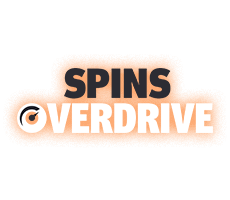How to play
Maximising your stack: advanced tips on poker buy-ins
The buy-in of a poker tournament is set in stone before you enter, but cash game players, including our fastforward players, have more flexibility regarding how much to buy into the game.
There are merits for buying in for the maximum sum permitted and positives for sitting down with a shorter stack. How much you buy in for is up to you. However, we suggest you read and digest this article before you settle on a sum that is perfect for you.
Why do players buy into cash games with a short stack?
Traditionally, cash game players sit down with a 100 big blind stack, which is known as a buy-in in bankroll management terms. For example, someone sitting at our $0.10/$0.25 cash tables with 100 big blinds would be armed with $25. However, some players prefer buying in for 50 big blinds or sometimes only 20.
What are the benefits of short stacking?
Buying into cash games with a shorter stack allows players to play in higher-stakes games while still following bankroll management. If you used a 30 buy-in bankroll strategy for cash games, you would need $750 at your disposal to be bankrolled for $0.10/$0.25 games. However, if you bought in for 50 big blinds instead, you would only need a $375 bankroll.
Short stacking also reduces the times you face difficult decisions after the flop. Why is this the case? Because your lack of funds behind means that your reverse implied odds are vastly reduced, as is the stack-to-pot ratio, in addition to making many moves all-in bets.
For example, imagine sitting at a $0.10/$0.25 cash game table with a $7.50 stack where you are dealt Qc-Qd. You raise to $0.75, and the big blind three-bets to $2.50. You can probably four-bet all-in here and be entirely happy with your decision. You are relatively comfortable getting your chips into the middle even if you just call the three-bet, the flop falls 9h-Jc-8h, and the big blind leads for $4.
Why is buying in for 100 big blinds the best scenario?
Buying into cash games for 100 big blinds is not some number that someone has plucked out of thin air. One-hundred big blinds are the number countless poker experts settled on as the optimally sized stack because it provides a happy medium regarding the positives and negatives associated with this stack size.
Your biggest positive for buying in for 100 big blinds is such a stack means you can win more money than buying in short. Sure, you will kick yourself when you lose a full stack when your aces get cracked by an unlikely set, but the times this happens are far outweighed by the times you double up by stacking an opponent.
Having a 100 big blind stack can intimidate your opponents more than sitting down with the minimum. Like in tournament poker, some cash game players are less likely to tangle with someone who can bust them. Ten-time World Series of Poker bracelet winner and formidable cash game legend Johnny Chan once said he likes to "bring the most soldiers to the table", so he always bought in for the maximum.
Larger stacks allow you to play a broader range of hands and chase flush and straight draws. Short stackers are handcuffed by their lack of chips and often sit waiting for the more premium of hands. Deeper-stacked players can mix things up and play a style more akin to loose-aggressive and make a real nuisance of themselves at the tables.
What about buying in for 200+ big blinds?
Some online cash games, and some found in cardrooms worldwide, allow players to buy in for 200 or more big blinds. These super deep-stacked games are not for the faint-hearted because pots can grow very large, which means potentially bigger wins but also more significant losses.
If everyone is sat with 200 big blinds or more, the implied and reverse implied odds are enormous, leading to players chasing draws because they have the odds to do so.
How many big blinds should I buy into a cash game with?
As mentioned, most poker experts state that 100 big blinds are the optimal stack size for sitting down at a cash game. That said, the choice is entirely yours.
It is worth considering buying in with a shorter stack if you are taking a shot at higher stakes games or know you are sitting at a table where several players are more skilled than you.
You should always try to ensure that your stack at least covers the weakest or the weaker players at the table. These foes will make more mistakes than the skilful opponents, so you want to maximise your chances of getting your hands on all their chips.
In a similar vein, this is why using the auto top-up feature at PartyPoker is something you should use. Set it so the software automatically tops up your stack to your buy-in amount whenever it drops below that figure. There is nothing worse than losing half of your chips only to pick up pocket aces on the next hand and not be able to extract the maximum value.
Weird stack sizes
Pay close attention when players join your table, keeping an eye on the number of chips they buy in for. Often, you will see players sit down with the last remnants of their bankrolls. You can usually spot these people because they will sit at a $0.01/$0.25 table with $11.73 or at a $0.25/$0.50 table with $21.96, or some similar amount that seemingly makes no sense.
These players are almost always there attempting to double their stack before leaving. They hope to spin up their stack before leaving the table and punting that money off somewhere else.
There is an exception to this rule like there usually is in poker! Watch if a player sits down with a bizarre starting stack, plays a couple of hands, and then is suddenly sat with a full 100 big blind stack. They have likely bought in with such a stack to make you think they are almost broke, but they are bankrolled for the stakes you are playing.
Footer Content test slot
Practice with the help of our poker coach, Whizz, and improve your game!
Create Account
